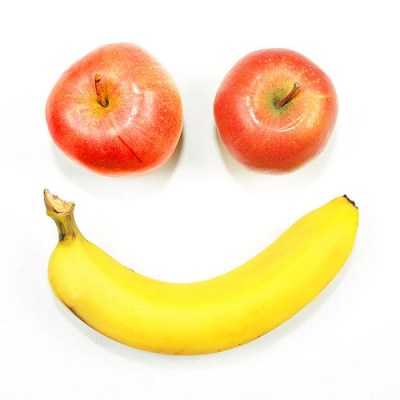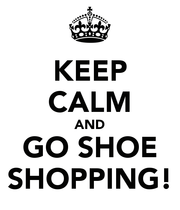|
My grandfather was a tulip grower during the last century and times were difficult in post-war Holland. They lived with 7 children - all girls - near a town that was bombed over 100 times during the war. But him and his brother managed to make a success of their business as they developed half a dozen unique tulip varieties. Now, some 65 years later, these beautiful tulips are still exhibited at the famous yearly Keukenhof Flower Show in Holland and are sold world-wide. You can imagine my surprise when I saw this variety - Flaming Parrot - in a garden centre here in Queenstown, New Zealand. (I actually got tears in my eyes..). I planted them last autumn and this is the result. I have given these bulbs to several friends as a present - with the story of my grandfather who developed this variety. It makes it much more personal and my friends love them too.. By telling a story, you can add value to your product or business. Whether it's the history, the people or whatever the background, it adds an extra dimension, something to remember you by and an emotional connection. Just like with these tulips. So, what are the stories you can tell about yourself and your business/products? Till next week, Marijke  Do you operate a business in Te Anau or Queenstown? Then this is your last chance to register for one of the Mailchimp courses NEXT WEEK 25 & 26 October 2017 and 7 & 9 November 2017 in Queenstown. If you would like to grow your direct bookings, then these courses will be invaluable to your business! Click here for more info!
5 Comments
Over the last few weeks I’ve been doing research into buying a particular type of specialised software. I narrowed the choice down to two options. I’ve tested both programmes and have been in touch with the two companies who develop this software, both large corporates.
I’ve asked both why I should buy their product and not their main competition’s, as they are both very similar. Both of these companies gave me unsatisfactory answers and I am still in limbo about which programme to buy. What I am trying to say with this example is: customers will compare your product or service with other ones (you do the same when you make a buying decision). It is very important you know your own unique selling points and why people should choose you. But from a customer’s perspective, it’s also important to know what your competition offers and what their strengths & weaknesses are. If you know this, it’s much easier to sell your own product! This doesn’t mean you need to put down your competition, just highlight what makes you unique and why the customer should buy from you. Ways to research your competition are: - Google them and see where they pop up! - their website & promotional material - talk to customers - review sites such as Tripadvisor - social media pages - keep an eye on how they are perceived in the media (you can set up a Google alert for this: www.google.com/alerts ) NOTE: registrations are now open for the 2016 Marketing for Success Programme. Click here for more info! Limited spaces! Till next week, Marijke Most businesses have competition. If you don’t, you’re lucky as you are the only one offering a particular product or service.
But if you have competition, you need to stand out (more). What are the reasons your customers choose you instead of someone else? These reasons are your points of difference. Here in Queenstown, we have a new (very large) supermarket, competing directly with the existing ones. As a result, another local supermarket recently started doing something a bit different. As you enter the supermarket, there is a table with pieces of fruit. There is a sign that says: Free fruit for kiddies. How cool is that! That certainly creates goodwill from customers and gives them a point of difference. So have a think about: what is it that you do particularly well, what do you specialise in, why do your customers choose you ? And make sure you communicate these points of difference with your customers! Till next week, Marijke I’ve just spent a few weeks in Holland on family matters. A busy time, but I did manage to fit in a little bit of retail therapy (the sales were on)!
I’d like to share a shopping experience of good customer service, follow up and marketing practice that you can use for your own marketing. 1. My sister and law Amanda and I walked into this nice shoe shop. As we walked to the shoe racks, a sales lady came up and asked if we wanted a cup of coffee. We said yes and a few minutes later a steaming cup of coffee arrived. (this made us feel good on a cold winter’s day – great service and a bit of wow factor). 2. We carried along trying on shoes and boots and both ended up buying 2 pairs. Upon check out, they had a good pitch why we should also buy this very special shoe cream that would protect the shoes. (This is a good upselling strategy – what else can you sell your customers?) 3. After we paid for our shoes, they asked if we wanted to go in the draw to get our money back. Who would say no? We put our names and email addresses on a list. (Here, they’re building their database so they can stay in touch). 4. The next day, we received an email with a 5 Euro gift voucher for our next purchase and additional sale reductions. (This would encourage you to go back and buy more, or buy shoes there again the next time). 5. Several days later, we received another email with the new collection shoes. Great follow up! As a customer (and marketer), I find this impressive. It’s not rocket science, and not difficult to do. What it does do is create a very pleasant shopping experience and an incentive to come back… I will, the next time I’m in Holland! So, what can you do to create that great customer experience and keep in touch with them? I’m back, so till next week! Marijke |
Categories
All
Archives
September 2021
AuthorMarijke Dunselman. Click here to read more about us! |





 RSS Feed
RSS Feed


